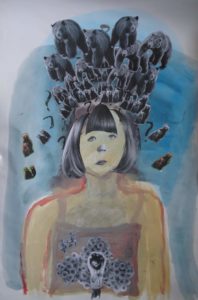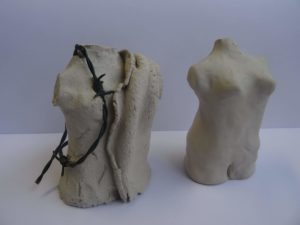Beeldende therapie – een behandelvorm waarin beeldende materialen zoals klei, schilder- en tekenmateriaal, speksteen, ijzerdraad, stof of collagemateriaal, op een methodische manier worden ingezet – is gericht op doelen die te maken hebben met emotioneel functioneren, zelfexpressie en welzijn voor patiënten. Deze vorm van therapie wordt vrij frequent ingezet in de geestelijke gezondheidszorg. Hoewel praktijkervaringen suggereren dat beeldende therapie een effectieve interventie is, is beeldende therapie weinig onderzocht en is er een degelijke wetenschappelijke basis nodig voor deze interventie (Reynolds, Nabors & Quinlan, 2000; Slayton, D’Archer & Kaplan, 2010; Van Lith, Schofield & Fenner, 2013).
Beeldende therapie biedt een wezenlijk andere therapeutische ingang dan praten. Mensen die goed kunnen praten over hun problemen, kunnen soms met woorden hun gevoelens niet bereiken. Door het beeldend werken krijgen zij meer contact met hun gevoelens en met wat hen doet vastlopen. Anderen hebben juist moeite met praten over wat hen bezighoudt. Dan kunnen het beeldend werken en de beelden die


